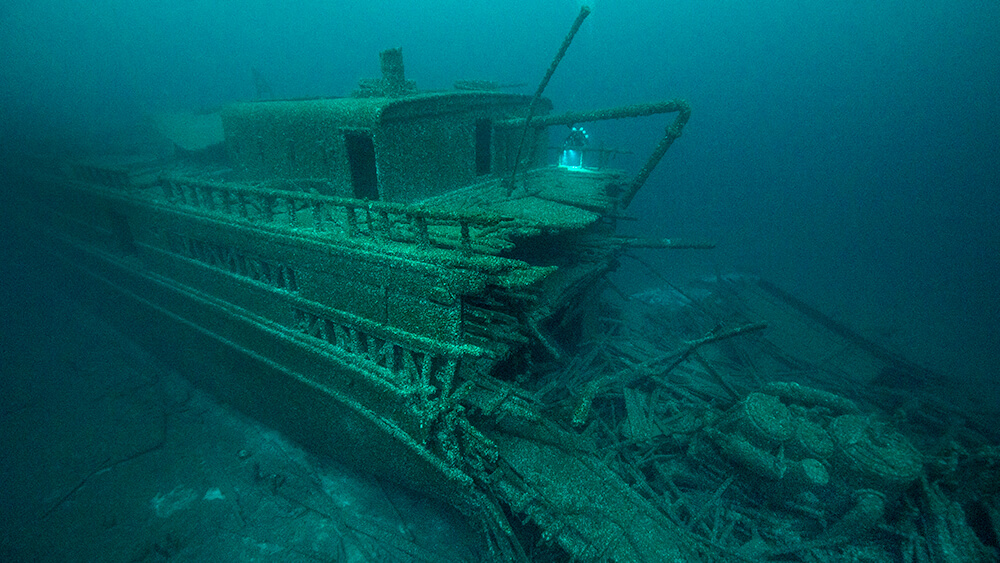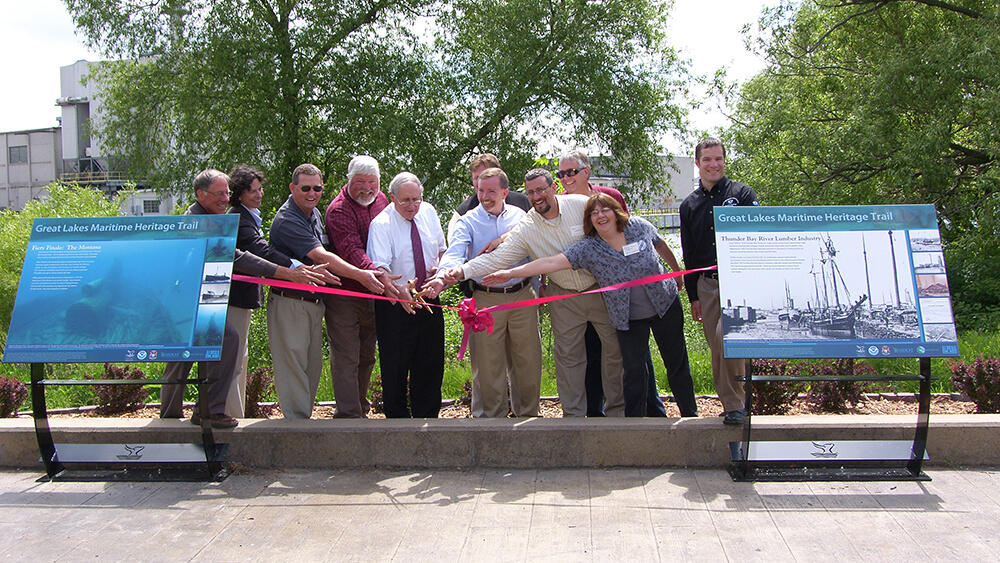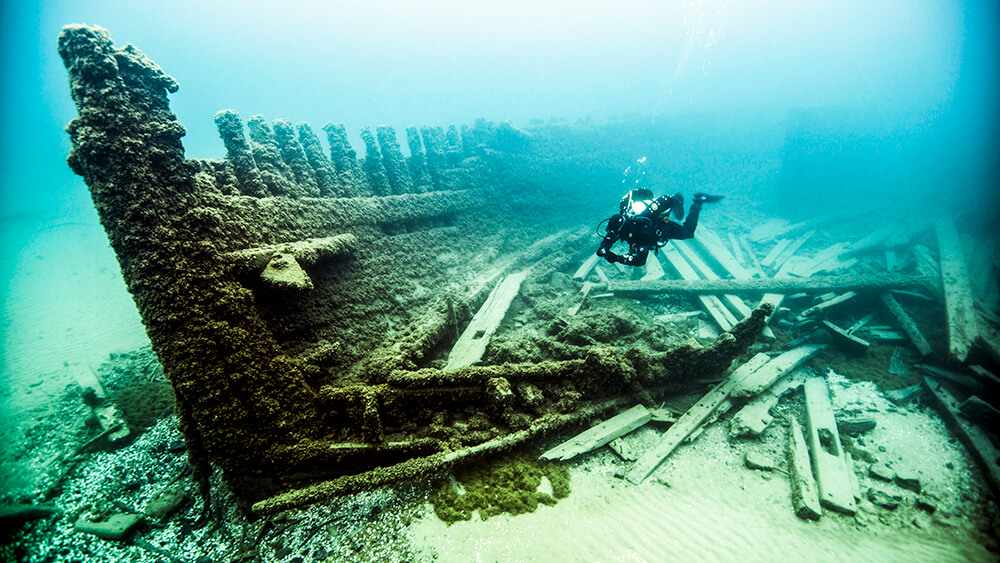Sanctuary History

Located in northwestern Lake Huron, Thunder Bay is adjacent to one of the most treacherous stretches of water within the Great Lakes system. Unpredictable weather, murky fog banks, sudden gales, and rocky shoals earned the area the name "Shipwreck Alley."
In addition to protecting and interpreting individual shipwreck sites, managing the sanctuary as part of a maritime cultural landscape reveals a broad historical canvas that can encompass many different perspectives and foster an interconnected understanding of our maritime past. The maritime cultural landscape of the sanctuary continues to unfold, embracing shared meaning in this nationally significant place.
Want to learn more about Thunder Bay’s history and resources? Click here for the sanctuary’s Condition Report.
Michigan History Center

Thunder Bay National Marine Sanctuary is managed jointly by NOAA and the state of Michigan. The director of the Michigan History Center represents the state in managing the sanctuary.
Community-Based Management

Before Thunder Bay's designation as a national marine sanctuary in 2000, the state of Michigan created the Thunder Bay Underwater Preserve, a 290-square-mile area designated in 1981 as the first of 11 preserves authorized by Michigan's "Bottomlands Act", 1980 PA 184, MCL 299.51 et seq. The state's preserve program is presently authorized by Part 761 of the Natural Resources and Environmental Protection Act, 1994 PA 451, MCL 324.76101 et seq.
The 4,300-square-mile area of Lake Huron is now both a national marine sanctuary and a state underwater preserve. The sanctuary superintendent manages the day-to-day operations and activities of the site. A joint management committee, consisting of the director of NOAA’s Office of National Marine Sanctuaries and a state agency member, makes major policy, budget, and management decisions. In addition, the Sanctuary Advisory Council provides advice to the sanctuary superintendent. Members of the advisory council represent the community's interests, including government, education, maritime history and interpretation, fishing, diving, tourism, economic development, the state-designated underwater preserve, and the community-at-large. The advisory council members serve as liaisons between their constituents and the sanctuary, keeping sanctuary staff informed of issues and concerns. The official name of the sanctuary is Thunder Bay National Marine Sanctuary and Underwater Preserve. To simplify the name, the Joint Management Committee has agreed to use Thunder Bay National Marine Sanctuary.
Protecting Thunder Bay's Underwater Treasures

For thousands of years, people have traveled on the Great Lakes. From dugout and birchbark canoes to wooden sailing craft and steel freighters, thousands of ships have made millions of voyages across the Great Lakes.
The last 150 years have been particularly explosive, transforming the region into one of the world's busiest waterways. Yet, with extraordinary growth comes adversity. Over 200 pioneer steamboats, majestic schooners, and huge steel freighters have wrecked near Thunder Bay alone.
Today, the sanctuary's shipwrecks capture dramatic moments from centuries that transformed America. As a collection, they illuminate an era of enormous growth and remind us of risks taken and tragedies endured. Lake Huron's cold, fresh water ensures that Thunder Bay's shipwrecks are among the best preserved in the world. Many sites remain virtually unchanged, masts standing, deck hardware in place, and the crews' personal possessions often surviving. Sites located in deeper waters are true time capsules. Other shipwrecks lay well-preserved but broken up in shallower waters. Readily accessible by paddlers, snorkelers, and divers of all abilities, these sites often provide sanctuary users with their first shipwreck experience.
Thunder Bay's shipwrecks are magnificent, yet vulnerable. Natural processes and human impacts threaten the long-term sustainability of our underwater maritime heritage. Through research, education, and community involvement, the sanctuary works to protect our nation's historic shipwrecks for future generations. Protecting Thunder Bay's underwater treasures is a responsibility shared by the sanctuary, its many partners, and the public.By fostering an understanding that our past connections to the Great Lakes and oceans are critical to our future, the sanctuary works to ensure that future generations will continue to experience and value Thunder Bay's irreplaceable underwater treasures.

